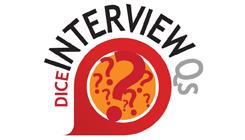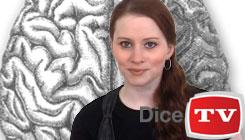Enterprise architects with TOGAF experience are in high demand. In fact, The Open Group Enterprise Architecture Framework (TOGAF) was recently named the highest-paid skill in a quarterly survey compiled by IT analyst firm Foote Partners.![]() While a TOGAF certification can help an EA land an interview, it doesn’t guarantee an offer. Hiring managers often ask situational or behavioral questions to see how an EA will apply the popular framework and standards during an interview, according to Dr. Bill Estrem, founder of Metaplexity Associates LLC, a Florida-based provider of enterprise architecture and TOGAF training. Check out the latest enterprise architect jobs. “Some companies follow the TOGAF framework religiously and others apply bits and pieces,” he said. “So managers tend to look for a flexible approach when they hire an EA.” Estrem provided three interview questions that probe an EA’s way of thinking about the structure of an enterprise and the architectural processes that are part of the TOGAF framework. If you find a lack of consistency in the ways that architecture projects are conducted and documented, how would you improve the situation?
While a TOGAF certification can help an EA land an interview, it doesn’t guarantee an offer. Hiring managers often ask situational or behavioral questions to see how an EA will apply the popular framework and standards during an interview, according to Dr. Bill Estrem, founder of Metaplexity Associates LLC, a Florida-based provider of enterprise architecture and TOGAF training. Check out the latest enterprise architect jobs. “Some companies follow the TOGAF framework religiously and others apply bits and pieces,” he said. “So managers tend to look for a flexible approach when they hire an EA.” Estrem provided three interview questions that probe an EA’s way of thinking about the structure of an enterprise and the architectural processes that are part of the TOGAF framework. If you find a lack of consistency in the ways that architecture projects are conducted and documented, how would you improve the situation?
- What Most People Say: “That’s simple, I would insist that we start applying the TOGAF standard.”
- What You Should Say: “I would try to apply the basic architecture development method (ADM) structure and cycle because it will resolve the issues that you mentioned. And while the first execution may be difficult, over time, I’m confident that I will be able to inject ADM into the organization's enterprise continuum. However, it’s important to note that ADM is a generic method for architecture development. It must be adapted to suit an organization’s needs. I’ve run into this situation before and I was able to build consensus and move forward by working with the internal planning team. Would you like to hear how I did it?”
- Why You Should Say It: You want to convey an understanding of ADM because it’s the heart of the TOGAF framework. But a good EA is a diplomat and a leader, and he or she knows how to adapt TOGAF to fit an organization’s culture, structure and business strategy. In most companies, it’s critical to justify the need for change and gain agreement before implementing changes to the development cycle.
A business unit in your company has developed a CRM system using a cloud-based solution. You have some concerns with the off-premises storage of sensitive customer data, which is in violation of enterprise architecture principles and corporate security policies. The business manager has resisted efforts to find an alternative solution. How would you resolve the situation?
- What Most People Say: “I’d insist on a resolution and work directly with the business manager. No EA worth their salt would ignore a potential security breach.”
- What You Should Say: “The TOGAF approach to governance sounds perfect for this situation. I’d start by requesting a compliance review from the oversight committee. Then, I’d compile and present the results to the architecture board and suggest a number of corrective actions.”
- Why You Should Say It: A compliance review is a prudent way to apply the TOGAF standard. There could be some valid business reasons why the data is being stored offsite. Using the architecture board as a barometer can help an EA pick their battles and using them as an enforcer can make it a whole lot easier to tackle and resolve difficult issues.
You’ve been designated the lead architect to create a company-wide master data management architecture. The project was outlined in a request for architecture work (RFAW), approved by the architecture board, and your firm utilizes TOGAF standards. Describe the types of activities you would conduct in the architecture vision phase.
- What Most People Say: “I’d create the architecture vision document and use it as a guide for the remainder of the project.”
- What You Should Say: “First, as the lead architect, I would form a team that represents key stakeholders. Once the team is assembled, I’d conduct a stakeholder analysis and a business transformation readiness assessment and then I’d create a communications plan. Then our team would create an architecture vision utilizing the business scenario technique that is part of the TOGAF standard. Finally, I’d assemble all of the artifacts into a statement of architecture work (SOAW) document. I’d use the document as a tool to gain support for the remaining phases of the project.”
- Why You Should Say It: The TOGAF standard prescribes a method that has several phases, and each phase has several steps. An experienced EA can convey a detailed understanding of the various phases and steps and the role they play in the success of a complex architecture project.
Upload Your ResumeEmployers want candidates like you. Upload your resume. Show them you're awesome.

